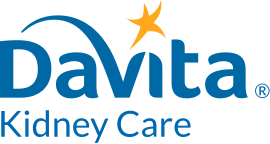By DaVita dietitian Rebecca Brosch, RD, LD
Most of us are looking for ways to make budget-conscious decisions. Most dialysis patients may assume that their kidney-friendly diets lead to higher food costs. Actually, similar to any special diet, it all depends on making wise choices. The following suggestions can help you lower food costs and still follow your renal diet.
You may be aware that the key parts of a renal diet require monitoring intake of sodium, potassium, phosphorus and protein. Let’s examine each of these and look for ways to lower food costs:
Sodium, budget meals and dialysis
Your dietitian may have already recommended that you remove the salt shaker in your pantry to help limit sodium in your kidney diet; however, there are many foods containing sodium that you’ll want to limit or avoid. Canned vegetables are a high source of sodium. Consider purchasing frozen vegetables that can help you avoid most of the sodium and the potential money waste that may occur if you purchase fresh vegetables that go bad before you eat them.
If you do purchase canned vegetables, because they can cost less or may be on sale, look for labels that say "no added salt" or "low sodium." You can rinse some salted canned vegetables under running water for at least one minute to help reduce sodium.
Other sources of sodium are convenience foods. These are foods that you find in the middle of the grocery store aisles that are pre-packaged and usually only require heating to prepare. Although these foods can be time savers, you are paying a high price for this convenience with your money and your health. Instead of buying pre-packaged foods or fast foods, try cooking at home. You can find recipes on the DaVita.com recipe section including convenience-type foods with low sodium content. Search for "Budget" and "Easy" recipes using the "Browse tags" feature at DaVita.com/Recipes.
Potassium, budget meals and dialysis
Some dialysis patients are instructed by their dietitian or doctor to limit potassium in their kidney diet, while others are not, depending on their dialysis type and lab values. The highest sources of potassium are from fruits and vegetables. Fresh produce can be expensive and lead to waste if you don’t eat it right away. You may want to buy fresh fruits and vegetables in bulk quantities only when you are sure it will be consumed. Purchase fresh fruits and vegetables that are in season. Grocery stores tend to put what is in season on sale because it is plentiful. Check out grocery store flyers for which fresh fruits and vegetables are on sale each week. Try to avoid pre-cut and pre-washed fruits and vegetables, which tend to be more expensive because you are paying for this convenience.
Canned fruits and vegetables will not spoil and some are going to be lower in potassium than the fresh variety. Draining the liquid from canned fruits can help lower potassium intake.
Frozen fruits and vegetables that are lower in potassium and recommended for your kidney diet are also a great cost savings option, as you don’t have to use them right away and can use only the portion you need.
Phosphorus, budget meals and dialysis
Convenience foods often contribute to higher food costs and can wreck your kidney diet. The preservatives added to increase convenience foods’ shelf life can cause them to have higher phosphorus content, which is restricted on a dialysis diet. Milk and dairy products are high in phosphorus. Purchasing milk substitutes, such as nondairy creamers or non-enriched rice beverages, are not as expensive as you may think. In many cases the cost difference may be one or two cents per ounce more for the milk substitutes. Check the price per unit in your grocery store to compare the difference.
Protein, budget meals and dialysis
People on dialysis require good quality protein in their diets. Try to stay away from pre-cooked meats, for these are typically more expensive than fresh meats. Pre-cooked meats may also be high in sodium and phosphorus. You can buy an entire chicken, for example, cut it up and freeze it in sections for multiple meals. Purchasing a whole chicken and cutting it up yourself can be more affordable than buying pre-cut chicken pieces.
Eggs are a great protein source and may be the best protein bargain. You can purchase 12 ounces (a dozen eggs) for only a few dollars, which is such a value for a great protein source.
Dialysis diet budget meal shopping tips
Here are some shopping strategies to help you stretch your food dollar and get the best quality food for your kidney diet:
- Develop your weekly grocery budget based on your monthly income divided by four weeks.
- Plan budget meals for the week. You may want to look at grocery store ads to comparison shop. Seeing what is on sale each week may give you ideas for planning meals.
- Prepare a shopping list based on your meal plan. It is crucial that you stick to the shopping list to save money and purchase healthy foods for your kidney diet. Supermarkets rely heavily on impulse spending, but if you are prepared with your shopping list, you can reduce extra spending on unnecessary and unhealthy items.
- Cook extra food for leftovers or cook several meals at once to make your own line of convenience foods.
- Use coupons only when they will equal the cost savings over generic brands. You can find food coupons in your mailbox, newspaper or on the internet. Sometimes you can find coupons on your favorite food brand’s website.
- Many supermarkets list the cost per unit on food, which you can use to compare which products provide you with the best deal.
Meal planning for the dialysis diet
DaVita.com’s recipe section has more than 500 kidney-friendly recipes and more recipes are added every week. These recipes are submitted by DaVita renal dietitians and are limited in phosphorus, potassium and sodium. Here are a few budget recipe ideas for a dialysis diet:
Breakfast
Lunch
Snack
Dinner
Dessert
Summary
Following your dialysis diet does not have to be expensive. You can put together budget meals that are kidney-friendly. These tools and strategies may be proof that you can be healthy and stick to your budget when you are on a renal diet.


